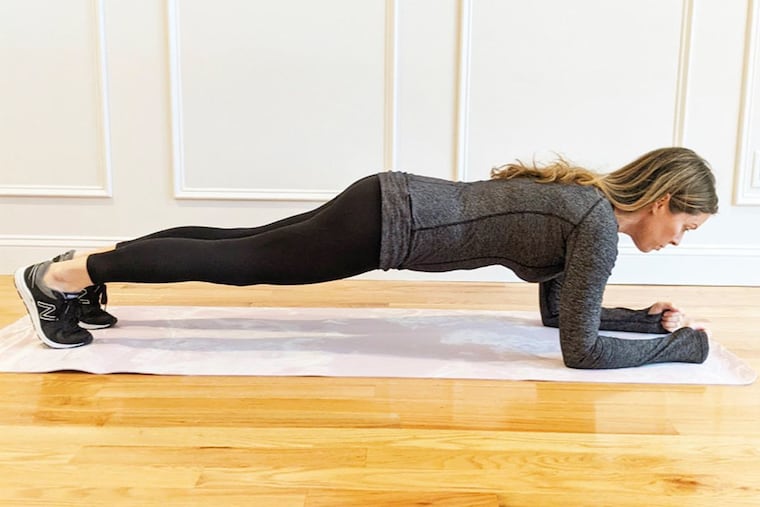If core-strengthening planks and push-ups are painful on your wrists, here are 5 modifications
Don’t push through the pain and suffer through your sets. Instead, try these tiny tweaks in form to help lighten the load on your wrists and make these tried-and-true exercises more enjoyable.

Are planks and push-ups wreaking havoc on your wrists? There is no denying the power of these total-body toning moves to help strengthen the major muscle groups in the chest, arms, and back. They also chisel the core muscles responsible for supporting and stabilizing your spine.
Your ability to move with ease through daily activities, such as sitting up, standing, climbing stairs, and reaching for an object, is dependent on the strength of these core muscles. It’s for this reason that planks and push-ups should always be programmed into your weekly workout.
But what if it hurts to balance your body weight on your hands? When performing these popular exercises, you might be comfortable for the first few reps. However, as the body fatigues and you reach your final rep, your wrists often begin to ache. And for those with arthritic wrists, these exercises might seem impossible.
When doing a plank or push-up, you should feel the burn in your abs, chest, shoulders, and arms — not your wrists. Don’t push through the pain and suffer through your sets. Instead, try these tiny tweaks in form to help lighten the load on your wrists and make these tried-and-true exercises more enjoyable.
Plank alternatives
From your forearms
Lower your body onto your yoga mat or carpeted surface. Prop your body weight up on your forearms, making sure to align your elbows beneath your shoulders.
Depending on your fitness level, you can either come up onto your toes to form a plank, or for beginners practice from your knees. For both versions, keep your back flat, hips in line with spine, gaze slightly forward, and squeeze your glutes. Engaging your glutes will help keep your core tight. Hold for 30 or 60 seconds, and remember to breathe through the exercise.
Side strengthener
From your left side, position your left forearm so your elbow is stacked below your shoulder. Make a soft fist with this hand. Your legs should be stacked.
Push up through your forearm, fist, and feet to lift your hips off the floor. Hold for 30 seconds then lower and switch sides. If you’re just starting, the same exercise can be done from your knees.
Push-up alternatives
Painless push-up
Return to your forearm plank pose. Remember to maintain proper form.
When ready, slowly lower your body until your chest hovers about two inches off the floor. Keep your elbows tucked close to your ribs and squeeze your shoulder blades.
Push through your forearms and feet (or knees), to return to the starting stance. Repeat 10 times.
Platform push-up
If you’d still like to perform a standard, hand-based push-up, try using a platform such as free weights to support your wrists. When gripping two, six-sided dumbbells (use hex weights, not rounded ones), you remove the deep bend in the wrist that causes muscle strain and soreness.
When practicing this method, be sure that the flat part of the weight is pressed into the ground for stability. Keep your elbows tucked close to your ribs as you lower your body for a push-up. Perform 10 times.
Chest press perk-up
You can easily engage the same muscle groups by swapping push-ups for chest presses. Grab a set of free weights and begin in a supine position on the mat.
Bend your knees to rest your feet flat on the floor. To protect your lower back, pull your legs up so your knees are stacked over your hips and press your lower back into the floor.
Hold a weight in each hand at the sides of your chest so your elbows form a 90-degree angle. Push your hands up and together. Avoid locking your elbows. Move slower on the lowering portion to really work your chest and core. Repeat 10 to 12 times.
Think of pain during planks and push-ups as a slap on the wrist. Edit your exercises so you can safely grow stronger.
Ashley Blake Greenblatt is a certified personal trainer and wellness coach in South Jersey. To learn more about her virtual training program, go to ashleyblakefitness.com.